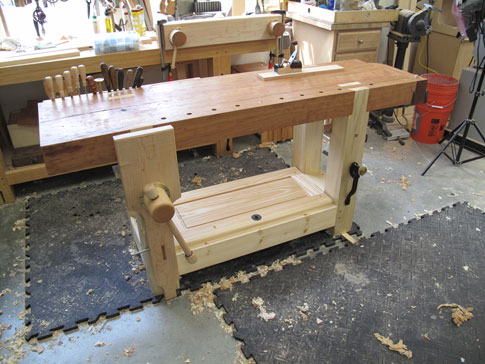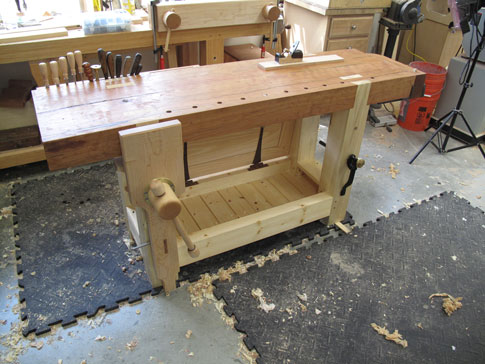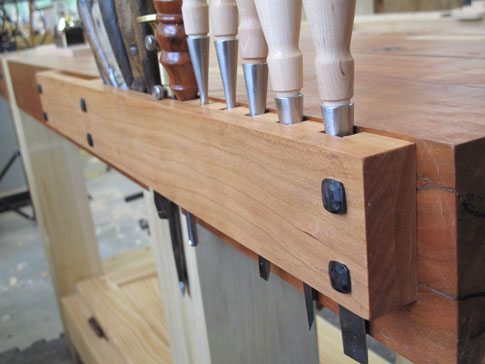
People want me to bless their mistakes when they design a workbench.
Just about every week, someone writes or calls me to say that they have designed their own workbench. But because it violates some of the principles of good bench design (as I see it) from my book “Workbenches: From Design & Theory to Construction & Use,” they want me to sign off on it before they start cutting wood.
No matter how silly the bench is, I always sign off on it. That’s because here’s what I’ve learned about people during the last 41 years: You cannot change their minds without a monumental effort. Believe me, I’ve tried pushing that rock up that hill. And I’m dang tired of it.
Build what you want because… listen, can you hear that? It’s the sound of trees growing. You can always build another bench.
Today I finally completed my latest workbench, a fairly pure Andre Roubo-style bench using massive timbers and built using (mostly) hand tools. After I built the skeleton of the bench, I decided to add some tool storage that was in the spirit of the the great Roubo. Here’s what I did:

I turned the lower shelf into a tool well with a covered lid. I’m sure someone has done this before, but I haven’t yet seen it in any old (or new) book (Edit: Roy Underhill did this. See below). In essence, I put a shelf inside the stretchers of the workbench’s base, then I added a lid that covers the shelf. The idea here is to provide just enough storage for your daily users. Pull them out of the toolbox, place them on the top of the lid and get to work. Put them away at the end of the day.
Also, I added an authentic French “rack” to the back edge of the benchtop. This rack holds all my chisels, vital marking tools and turnscrews. I secured it with some awesome Roman-style headed nails. Those were fun to install.

In the coming weeks, I’ll be sure to add a locking drawer under a portion of the benchtop that I don’t use so much.
The bottom line here is that tool storage on workbenches was fairly minimal in the 18th century. And I think it should be minimal today, as well. So what should you do with all the tools you haven’t touched in two years? Get rid of them. I’m of the mind (and you’ll be reading more about this in the coming months) that you should be focused on purchasing fewer high-quality tools instead of a metric diaper load of poor-quality tools.
But that is the subject for another book.
The finished bench is awesome. I know because I have been using it (to the disdain of my 2005 Roubo-style bench) almost exclusively.
Is it worth the trouble? Find out and see. The completed bench will be at the Lie-Nielsen Hand Tool Event on June 4-5. And it will be at Woodworking in America on Oct. 1-3. Check it out and let us know what you really think.
— Christopher Schwarz